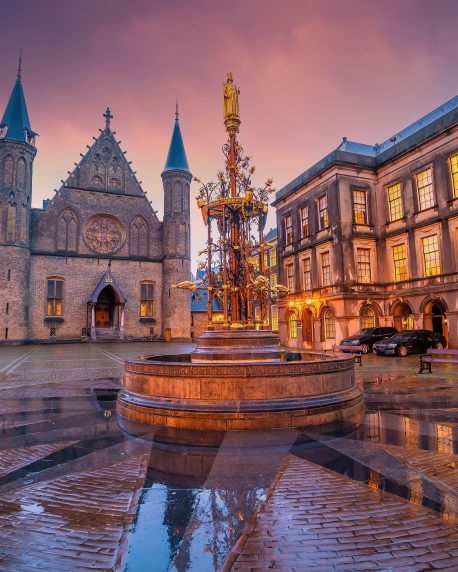Nitrogen crisis puts provinces on lobbyists’ map
The Netherlands has a remarkable number of provinces for a country of its size. Just compare it to Canada. The second largest country in the world has 10 – plus 3 so-called territories. Someone arriving in the Netherlands for the first time might think that the Dutch attach great value to this layer of government. This should be the case in view of the nitrogen issue – and other environmental matters such as permits – but it is not evident from the ballot boxes, for example. Turnout in provincial elections has fluctuated between 45 and 55% since the early 1990s. One reason is that voters don’t have a picture of what the county does. Advocates do or will soon have that in mind.
In the coming period, until after the provincial council elections in March of next year, the province must develop far-reaching policies to reduce the emission of nitrogen drastically on the instructions of Minister Van der Wal-Zeggelink (Nature & Nitrogen). This has consequences for livestock farming, which emits the most ammonia, as well as the industrial, mobility and construction sectors. The latter are underexposed in the media frenzy, but that does not mean that they remain out of range.
The Minister of Nature and Nitrogen is working on a national plan to reduce the other nitrogen source, nitrogen oxides, for which the mobility, industrial and construction sectors are held primarily responsible. Nitrogen oxides blow out further than ammonia, that one ‘nitrogen leg’, and that makes national measures more logical. The provinces can, albeit to a lesser extent, still turn the knobs in the implementation. They will try, because the social tensions are enormous. The ominous comments that nature would not be sufficiently helped even without livestock farming do the rest.
By the way, industry can also be called to task with regard to ammonia emissions. In the National Programme for Rural Areas, Nitrogen Minister Van der Wal-Zeggelink has set the provinces clear targets for reducing ammonia emissions. Because the majority of these emissions come from agricultural sources, the minister feels that the reduction must come primarily from this sector – but not alone. Industry with a permit sometimes emits ammonia near nature reserves and can also have reduction targets imposed on it.
Not everything is set in stone yet. The provinces must provide customization and the ammonia targets can still be adjusted somewhat, for example as a result of measures to reduce nitrogen oxides. The switch from fossil fuels to renewable energy can help with the latter but will take time. Especially when you consider that Limburg and North Brabant, both with a hefty nitrogen task, have announced a temporary halt on new or heavier electricity connections because there is insufficient capacity.
If someone lands in the Netherlands next year after the election, their perception could just be right. The province suddenly matters and it is buzzing with political activity. Advocates will want to make their mark on nitrogen policy.
Photo by Petr Ganaj
"The province suddenly matters and it is buzzing with political activity."
Public matters







